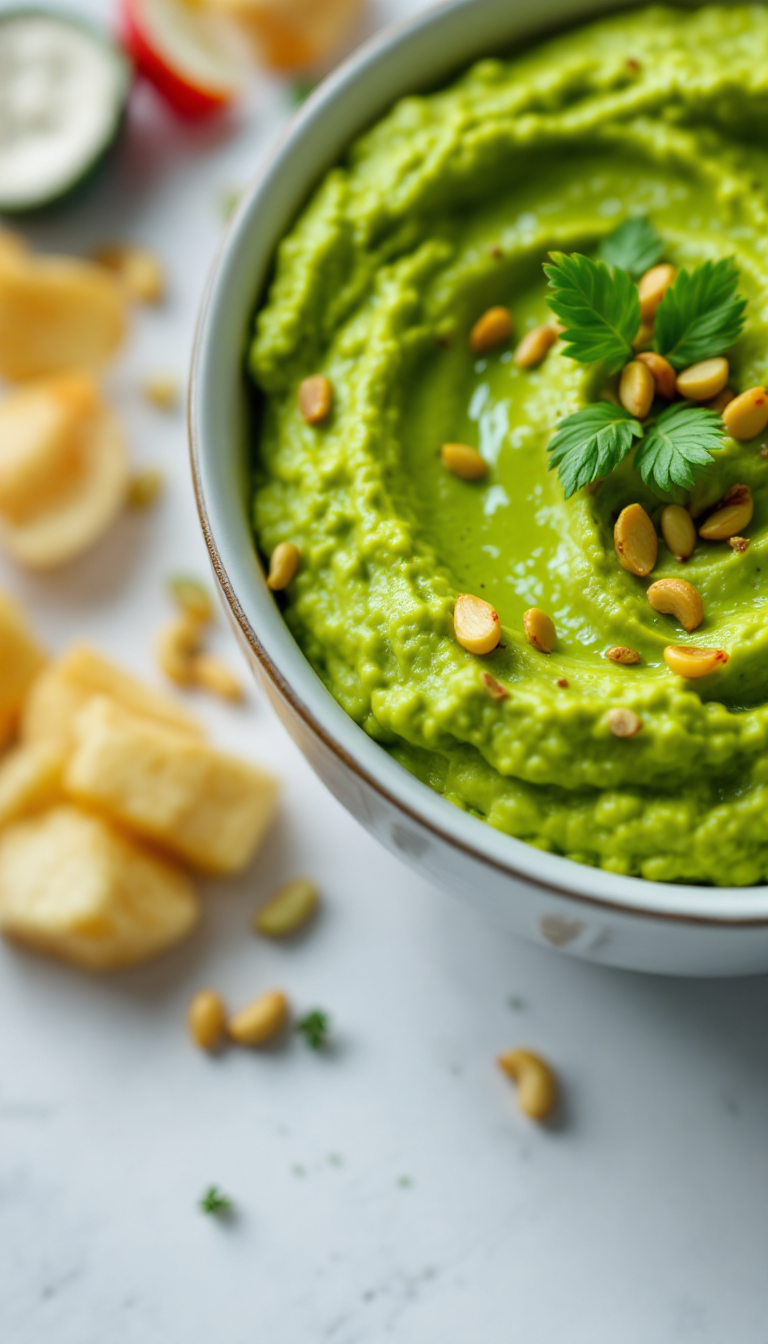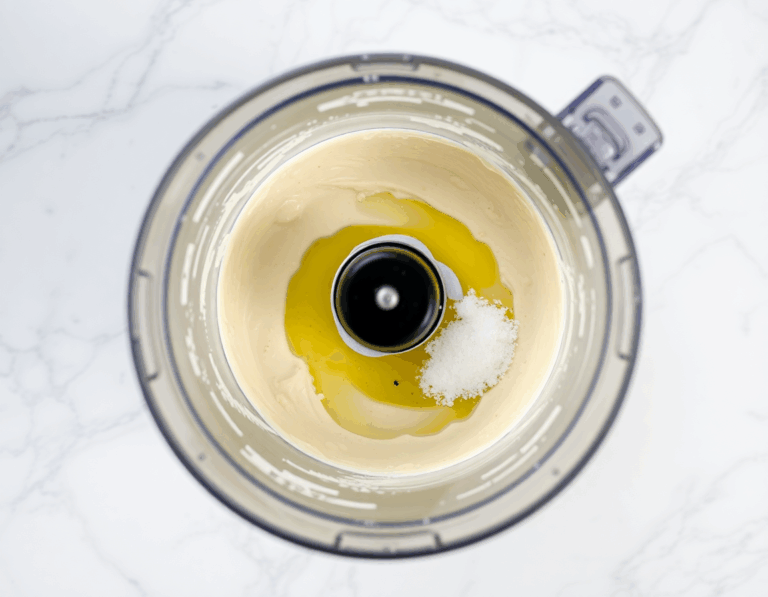Who would’ve thought that a humble bean could transform into a vibrant, creamy delight? I stumbled upon this edamame hummus recipe while trying to impress my vegan cousin at last year’s picnic—spoiler alert, it stole the show. The blend of flavors is like a dance party in your mouth, where the smoothness of edamame meets the zesty punch of lemon, and somehow, it all works in harmony.
Steps
- In a food processor or blender, combine tahini, lemon juice, olive oil, garlic, and salt. Blend for about 1½ minutes, scraping the sides as needed, until the mixture is smooth.
- Add cilantro to the mixture and blend for an additional minute, ensuring the herbs are fully incorporated and the mixture is smooth.
- Add half the edamame and 2 tablespoons of water to the processor, blending for 1 minute. Scrape the sides, add the remaining edamame, and blend until the hummus is smooth and thick, 1 to 2 minutes more.
- If the hummus is too thick, gradually add 1 to 2 tablespoons of water while the processor is running until the desired consistency is achieved.
- Taste the hummus and add more salt if needed. Transfer to a serving bowl, drizzle with olive oil, and garnish with cilantro and sesame seeds if desired. Store leftovers in the fridge for 4 to 6 days.
Ingredients
- ? cup tahini
- ? cup lemon juice (approximately 2 to 3 lemons)
- 3 tablespoons extra-virgin olive oil, plus extra for garnish
- 1 medium garlic clove, roughly chopped
- ½ teaspoon fine-grain sea salt
- ½ cup lightly packed fresh cilantro leaves, plus additional for garnish
- 1 ½ cups shelled edamame (10 ounces), preferably organic, defrosted if frozen
- 2 to 4 tablespoons water, as needed
- Sesame seeds for garnish (optional)
FAQ
- What is edamame hummus, and how does it differ from traditional hummus?
- Edamame hummus is a variation of traditional hummus that uses edamame, which are green soybeans, instead of chickpeas. While both versions are rich and lemony, the edamame version has a green hue and might require additional tahini, lemon juice, and water to balance its fibrous texture.
- How can I serve edamame hummus?
- Edamame hummus is a versatile dish that can be served with sliced crunchy vegetables, whole-grain crackers, or pita bread, making it a healthy appetizer or snack option.
- How do you prepare edamame for this hummus recipe?
- To prepare edamame for this recipe, use frozen, shelled edamame. Defrost them by simmering in boiling water for about 4 to 6 minutes. Then drain them well and let them cool for at least 5 minutes before adding them to the hummus.
- What should I do if my edamame hummus turns out too thick?
- If your hummus is too thick or chunky, gradually add 1 to 2 tablespoons of water while running the food processor until you achieve the desired consistency.
- How long can leftover edamame hummus be stored?
- Leftover edamame hummus can be stored in the refrigerator and should remain fresh for about 4 to 6 days.
Tips
- Defrosting Edamame: To achieve the best texture, make sure to properly defrost the edamame by boiling them in water for about 4 to 6 minutes. After draining, let them cool on a plate for at least 5 minutes before using them in your hummus.
- Adjusting Consistency: If your hummus turns out too thick, gradually add 1 to 2 tablespoons of water while processing until you reach your desired smoothness. This will help achieve a creamy texture.
- Balancing Flavors: Taste your hummus before serving. If it lacks flavor, consider adding more salt. It’s often helpful to blend in an additional ¼ teaspoon of salt if needed.
- Garnishing for Extra Flavor: Enhance the presentation and flavor by drizzling olive oil over the hummus and sprinkling it with fresh cilantro leaves and sesame seeds before serving.
Equipment
- High-powered blender or food processor (e.g., Vitamix or Blendtec)

